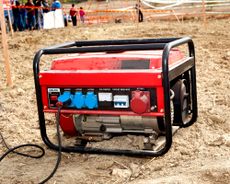
Many people don’t give much thought to their backup generators until a power outage occurs. When storms, heavy winds, and other severe weather conditions come into contact with power lines, they can cause outages that last days or even weeks. That’s why it’s essential to conduct routine load bank testing for your backup power source. Below is an overview of how this process works and why it’s so important.
What Is Load Bank Testing?
 A load bank test is a professional evaluation of your generators to ensure that your systems are fully operational. All of the components are tested under loaded conditions and at its full output rating. This process works by placing an artificial load on the generator. For instance, the load on the engine is increased at gradual intervals to measure its ability to perform at each level and for extended periods of time. The technician can evaluate how the generator withstands the increasing load to determine if any repairs or replacements must be made.
A load bank test is a professional evaluation of your generators to ensure that your systems are fully operational. All of the components are tested under loaded conditions and at its full output rating. This process works by placing an artificial load on the generator. For instance, the load on the engine is increased at gradual intervals to measure its ability to perform at each level and for extended periods of time. The technician can evaluate how the generator withstands the increasing load to determine if any repairs or replacements must be made.
Why Is It Important?
As they are designed to be used only in emergencies, you might not be aware that a generator is problematic until a power outage occurs. A load bank test ensures that it will run at peak performance, so you can depend on it in an emergency. Because the generator is evaluated at its full output rating, this allows you to determine whether or not the engine can produce energy at full loaded capacity while maintaining a safe temperature and pressure level.
Load bank tests can ensure that your business experiences minimal downtime in the event of a power outage. When it’s time to schedule a routine inspection, turn to the team at Aero Services in Fairbanks, AK. Since 1957, this premier electric motor repair shop has offered high-quality repair and maintenance for a wide range of equipment, including welding machines, compressors, generators, and pumps. Call (907) 479-6666 today to schedule an appointment, and visit their website for more information about their services.
About the Business
Have a question? Ask the experts!
Send your question

